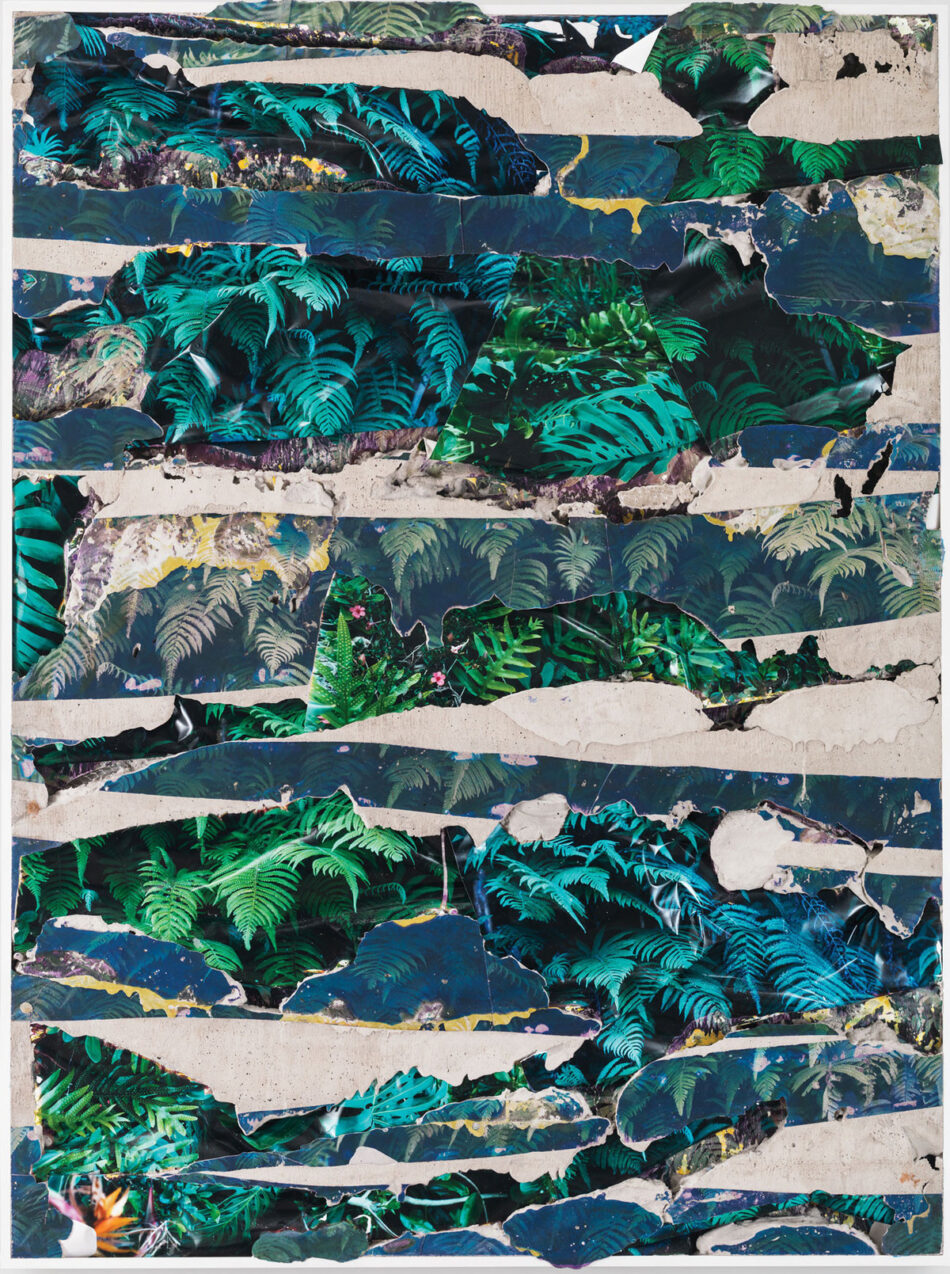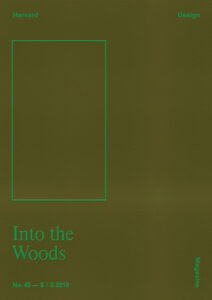The Jungle’s Call
Derived from the Sanskrit word jangala, “jungle” is used to refer to “an uncultivated waste,” “a place of bewildering complexity and confusion,” “a scene of ruthless competition, struggle, or exploitation,” and an “impenetrable growth of vegetation,” according to the Oxford English Dictionary. These readings gather around an image of wildness. They present the jungle as the antithesis of the (good) city—a place for exiles, sages, ascetics, and bandits. With the rise of the forest as a landscape typology in the 19th and 20th centuries, the view of the jungle turned utilitarian while remaining in some way “other” to the city. “Jungle” today continues to conjure a forest of high-canopy trees with a thick understory and a rich diversity of wildlife even as some scholars argue that the word in its original Sanskrit referred to grasslands with the occasional tree of the acacia family.
These readings of the jungle, whether as grassland or forest, fail to consider the role played by a vital element in this part of the world: the monsoon. The rains carried on this wind relocate the jungle in a ubiquitous wetness, a potentially new ground of design.
Blowing from the southwest between June and September, the monsoon brings clouds laden with ocean moisture. These clouds envelop the “monsoon belt,” which stretches across the tropics of South and Southeast Asia, in a wetness that is everywhere in varying degrees: air, earth, flora, and fauna. The jungle here is a holding of this wetness. For the period of the monsoon and after, its biomass increases exponentially with flora and fauna that come to life and thrive for a period before receding once the monsoon has passed. The increase consumes any orienting traces, whether in a grassland or a forest. But it is not this erasure that draws attention; rather it is the remarkable ability of vegetation to hold wetness in clouds, humidity, dew, rain, and cellular matter.
Significantly, the wetness that exceeds the holdings of the jungle does not flow to the sea as water does. It rather spreads, soaks, blows, seeps, osmotes, and transpires its way to ever-extending holdings of wetness, holdings that eventually become the ocean that reconnects with the wind. This ocean, which is the beginning and end of the monsoon season, is not the geographic entity that surrounds continents and covers 70 percent of the Earth’s surface; it is the all-encompassing wetness that in India is called sindhu—a Sanskrit word generally translated as “ocean” but which can be translated more specifically as “ocean of rain,” indhu being a raindrop. Wetness and its movement from ocean back to ocean or from raindrop back to raindrop does not find a place in geographic maps. After all, maps work not with wetness, but with land and water as two constituent parts by which geographers discipline an earth surface. It is a surface that is elusive in sindhu, certainly the jungle. More critically, it is unnecessary, involving as it does a violent act of reduction and simplification that amounts to the loss of an infrastructure of holding wetness to an infrastructure of draining water.
Land and water are products of an intentional act of separation carried out with the help of a uniquely endowed line drawn in a chosen moment of time. Water, however, seems to always be lesser in this difference, confined as it is by the same line to a place in waterbodies that are made to serve land—draining it, irrigating it, providing it with a waterfront for real estate, even making it with depositions of silt, but primarily keeping it dry for settlement. In short, the act of separation is a land-centric idea conceived to contain and control wetness.
The jungle does not give in to this act of separation, at least not without serious loss of its being. Its wetness makes it difficult to call out an earth surface let alone divide water from land on it. Calling out an earth surface requires separating “wetness above” from “wetness below” for which not only must rain stop, but processes such as evaporation and transpiration that transition wetness from a liquid state to a vaporous one need to be ruptured or ignored. To divide this surface, the rain must stop, the clouds must lift, and assumptions must be made as to where water lies in sufficient quantities to constitute a water body. It is a task fraught with difficulty given the boundless nature of wetness and its tendency to be everywhere in some measure, including in living beings.

This defiance of wetness does not affirm a wildness, however. It raises the possibility of another beginning or, in Cicero’s terms, another “first nature.” In On the Nature of the Gods, the 1st-century BCE Roman philosopher describes “second nature” as a world crafted by human hands from a first nature “discovered by the intelligence and observed by the senses.” This crafting, he writes, is evident in cultivating land, rearing animals, extracting metals, and building houses, ships, and cities, etc.; he concludes his list by saying: “We enjoy the mountains and the plains, the rivers and the lakes are ours, we sow the crops and trees, we give fertility to the land by conveying water to it, we confine the streams, we straighten or divert their course—in short, by means of our hands we endeavor to create in nature a kind of second nature.”
Cicero, like most people today, embraces a first nature that plays out on an earth surface with a land component drained by rivers, raised with mountains, extended by plains, planted with trees, but also crafted in part by human hands into a second nature of agricultural fields, orchards, cities, industries, and what he calls arts of pleasure and necessity. If he had visited the monsoon belt, it is likely that he would have seen the jungle, whether grassland or forest, as another land use on this surface, a wild place perhaps awaiting discovery and observation.
But what if first nature does not play out on an earth surface, but rather in an ocean of rain where the jungle is at home? The second nature that would follow most likely would not be driven to drain water off land but to hold wetness in the many ways the jungle does—clouds, humidity, dew, rain, cellular matter, and more. It would be the starting point of another design paradigm, one that does not feature the land-water binary and the many dualisms that follow from itóincluding settlement-flow, urban-rural, formal-informal—dualisms that consume not just design discourse but disciplines across the humanities and sciences. In this sense, the call of the jungle is both material and transdisciplinary. It positions designers to lead in crafting a second nature from a wetness “discovered by the intelligence and observed by the senses.”
The designer’s task could begin in the monsoon belt, a place that readily makes different sense when engaged in wetness rather than on an earth surface. The people of this belt, which was until recently colonized by European powers, struggle today to “develop” more often than not with aid and advice from their former colonial masters. The legacy of these colonizers is not merely in a divided surface; it is also in an eye disciplined by geography and other means to see this surface and appreciate the economy, governance, ecology, and infrastructure that keeps it in place. It is a legacy that continues unquestioned in place even as it makes little sense, least of all in the monsoon. Waterbodies here flood devastatingly, are terribly polluted, and are bitterly and often violently contested, forcing people to negotiate everyday life in a chasm between two worlds: on the one hand, their experience steeped in wetness and, on the other hand, their infrastructure and reasoning structured by the land-water divide. It makes for a dissonance between a first and second nature that can be debilitating. Seeing these people, their place, and their practices in an ocean of rain may explain in more constructive ways what scholars, activists, and planners continue to see, critique, and tackle on an earth surface as chaos, tradition, underdevelopment, informality, and otherness.
With the overwhelming weight of a geographic surface still in place, the task of designers is not easy. It requires them to seek out and engage the cracks and interstices of an imposed surface as transgressors with the purpose of drawing out a vocabulary of wetness not only for itself but also to counter a land-water surface.
Today, the call of the jungle for wetness can be rewarding for more than the sake of the people of the monsoon belt. It can provide a way forward for a world faced with rising seas and increasing flood events attributed to climate change. The solution to these problems does not have to lie in
re-mediating (yet again) the land-water divide; it could lie in a second nature that is not in play at all because its first nature is not included within the realm of observation and discovery. This is a first nature that does not make the land-water divide to begin with, a divide that has arguably created the problems the world faces today with a line of separation conceived to subjugate water. Here, the jungle is more than a holding of wetness; it is a new beginning.
Dilip da Cunha, an architect and planner, works out of Philadelphia and Bangalore. He teaches at Harvard University, Columbia University, and the Srishti Institute of Art, Design, and Technology in Bangalore. He is author or editor, with Anuradha Mathur, of Mississippi Floods: Designing a Shifting Landscape (2001), Deccan Traverses: The Making of Bangalore’s Terrain (2006), Soak: Mumbai in an Estuary (2009), and Design in the Terrain of Water (2014). His most recent book, The Invention of Rivers: Alexander’s Eye and Ganga’s Descent, is forthcoming from University of Pennsylvania Press.
